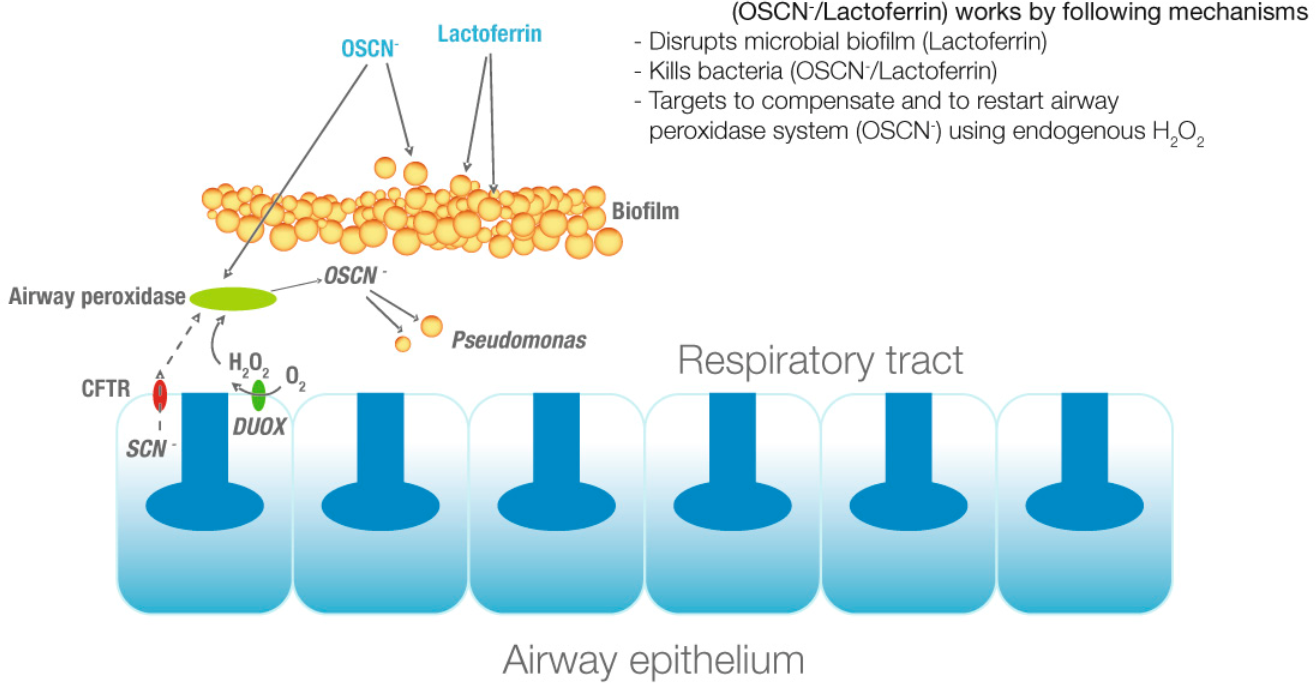Respiratory Tract Antimicrobial Defense System on:
[Wikipedia]
[Google]
[Amazon]
The respiratory tract antimicrobial defense system is a layered defense mechanism which relies on components of both the innate and
 Lactoferrin (LF) is a multifunctional protein which is an essential part of the respiratory tract antimicrobial defense system. LF proteolysis produces the small peptides
Lactoferrin (LF) is a multifunctional protein which is an essential part of the respiratory tract antimicrobial defense system. LF proteolysis produces the small peptides
adaptive immune system
The adaptive immune system, also known as the acquired immune system, is a subsystem of the immune system that is composed of specialized, systemic cells and processes that eliminate pathogens or prevent their growth. The acquired immune system ...
s to protect the lungs and the rest of the respiratory tract
The respiratory tract is the subdivision of the respiratory system involved with the process of respiration in mammals. The respiratory tract is lined with respiratory epithelium as respiratory mucosa.
Air is breathed in through the nose to th ...
against inhaled microorganism
A microorganism, or microbe,, ''mikros'', "small") and ''organism'' from the el, ßĮĆŽü╬│╬▒╬Į╬╣Žā╬╝ŽīŽé, ''organism├│s'', "organism"). It is usually written as a single word but is sometimes hyphenated (''micro-organism''), especially in olde ...
s.
In the first line of defense, inhaled bacteria are trapped by mucus
Mucus ( ) is a slippery aqueous secretion produced by, and covering, mucous membranes. It is typically produced from cells found in mucous glands, although it may also originate from mixed glands, which contain both serous and mucous cells. It is ...
and are swept toward the pharynx
The pharynx (plural: pharynges) is the part of the throat behind the mouth and nasal cavity, and above the oesophagus and trachea (the tubes going down to the stomach and the lungs). It is found in vertebrates and invertebrates, though its struc ...
and are swallowed. Bacteria which penetrate the mucous layer are dealt with a second line of defense which includes antimicrobial peptides that are secreted by the surface epithelium
Epithelium or epithelial tissue is one of the four basic types of animal tissue, along with connective tissue, muscle tissue and nervous tissue. It is a thin, continuous, protective layer of compactly packed cells with a little intercellul ...
of the respiratory tract which kill many strains of bacteria. Those bacteria that are resistant to antimicrobial peptides are killed by a variety of reactive oxygen species produced by phagocytes. In a third line of defense and as a last resort, persistent bacterial infections which escape the innate immune system are eliminated by the adaptive immune system
The adaptive immune system, also known as the acquired immune system, is a subsystem of the immune system that is composed of specialized, systemic cells and processes that eliminate pathogens or prevent their growth. The acquired immune system ...
.
Lactoferrin
 Lactoferrin (LF) is a multifunctional protein which is an essential part of the respiratory tract antimicrobial defense system. LF proteolysis produces the small peptides
Lactoferrin (LF) is a multifunctional protein which is an essential part of the respiratory tract antimicrobial defense system. LF proteolysis produces the small peptides lactoferricin
Lactoferricin is an amphipathic, cationic peptide with anti-microbial and anti-cancer properties. It can be generated by the pepsin-mediated digestion of lactoferrin.
Lactoferricin is the most studied AMP derived from milk protein. The complete se ...
and kaliocin-1 both with antimicrobial activity.
Reactive oxygen species, oxygenated compounds
Phagocytes possess a superoxide-producing NADPH oxidase enzyme complex. Other cells in the respiratory tract also produce superoxide and hydrogen peroxide through the activity of dual oxidase 2 proteins, also known as Duox2. The superoxide generated by these enzymes complexes dismutates intohydrogen peroxide
Hydrogen peroxide is a chemical compound with the formula . In its pure form, it is a very pale blue liquid that is slightly more viscous than water. It is used as an oxidizer, bleaching agent, and antiseptic, usually as a dilute solution (3%ŌĆ ...
which in turn is used by myeloperoxidase to produce bactericidal hypochlorous acid. In addition, the submucosal glands of the respiratory tract secrete myeloperoxidase and lactoperoxidase
Lactoperoxidase is a peroxidase enzyme secreted from mammary, salivary and other mucosal glands including the lungs, bronchii and nose that functions as a natural and the first line of defense against bacteria and viruses. Lactoperoxidase is a m ...
(LPO) that catalyzes the oxidation of thiocyanate and detoxify hydrogen peroxide or ROS to the antimicrobial hypothiocyanite.
The oxygenated compounds produced by the lactoperoxidase system does not attack DNA and is not mutagenic and is known to be safe. Hypothiocyanite generated through this pathway displays broad spectrum bactericidal activity including potent antibacterial action on '' H. pylori''.
Cystic fibrosis
Thiocyanate secretion incystic fibrosis
Cystic fibrosis (CF) is a rare genetic disorder that affects mostly the lungs, but also the pancreas, liver, kidneys, and intestine. Long-term issues include difficulty breathing and coughing up mucus as a result of frequent lung infections. O ...
patients is decreased resulting in a reduced production of the antimicrobial hypothiocyanite and consequently contributes to the increased risk of airway infection.
Therapeutic applications
Lactoferrin with hypothiocyanite for the treatment of cystic fibrosis has been grantedorphan drug
An orphan drug is a pharmaceutical agent developed to treat medical conditions which, because they are so rare, would not be profitable to produce without government assistance. The conditions are referred to as orphan diseases.
The assignment of ...
status by the EMEA and the FDA
The United States Food and Drug Administration (FDA or US FDA) is a federal agency of the Department of Health and Human Services. The FDA is responsible for protecting and promoting public health through the control and supervision of food s ...
.
References
{{immune_system Immune system Lung